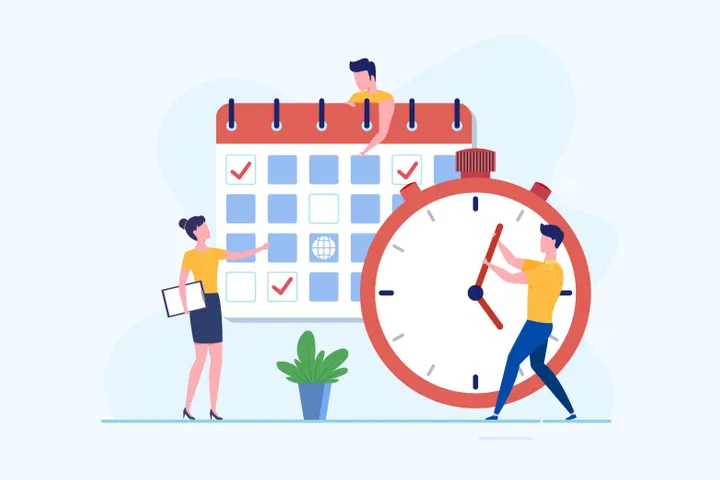The world moves, day in and day out. In the midst of all chaos, one of the biggest guns a person could have is time management. A busy working day could get overwhelming, as much as tasks just keep surfacing, along with your emails and meetings.
In fact, it does not mean that one should fit more and more activities in his or her day but rather make better decisions on how to allocate his or her time. The escape room game could be a great avenue for improving your time management skills.
Here are some effective strategies that will assure you of an increase in time management skills and a boost in productivity.
-
Be aware of your priorities
It starts with understanding your priorities. Not all activities hold the same value or of the same importance. A few will add much more in achieving your goals than others.
To prioritize your work, consider the following:
Urgency vs. Importance: Utilize the Eisenhower Matrix by plotting each activity as to whether it is urgent vs. important. Give full attention to tasks which are urgent and important.
Long-term vs. Short-term: Striking a good balance between activities that yield almost immediate results and those that could yield long-term results. A fine way to balance the need to attend to immediate needs while working on larger goals simultaneously.
-
Plan Your Day the Night Before
All it really takes is a few minutes at the end of each day, reviewing what you have done and setting a plan for the following day, to save you so much time and reduce stress later on. You can address whatever needs to be taken care of right from the beginning of your day.
Now, while planning for the day, here is a guideline that one may follow:
Identify three MITs for the day: You are to identify three of the most important tasks that need to be accomplished that day. Once you are through with them, you will feel satisfied and that you are in the movement of your priorities.
Time Blocking: Give specific time blocks to various activities. This will prevent multitasking, and give time to any particular task, which in turn ensures better efficiency and productivity.
-
Practice Wise Technology Use
Tools like email, instant messaging, and project management software can really help you be more productive, they could also be major distractions if used unwisely.
Here’s how to use technology effectively:
Task management tools: Start implementing Trello, Asana, or Todoist to monitor the tasks and due dates. These are going to help you get through it all in one place, making sure that nothing falls between the cracks.
Reduce distractions by setting your devices to be less in-your-face nagging. Honestly, most notifications are probably going to be nonsensical anyway. Perhaps it is better to set certain times where you will check the e-mail or the messages rather than trying to be an instant reactor when an incoming message arrives.
Automate Repetitive Tasks: Use automation tools like Zapier or IFTTT to make less important, repetitive activities you do every day/week automated, freeing you up to focus on projects that are higher priority.
-
Break Down Large Tasks
Large tasks often feel overwhelming, which is one reason people procrastinate. When you break them down into smaller more manageable steps, feelings of intimidation are minimized and thus the ability to manage increases. A technique of “chunking” enables you to pay attention to one step at a time and work through the task bit by bit.
To practice this:
Big tasks must be divided into subtasks: where there is a big task, break it down into small ones. Keep the ball rolling without having an overwhelmed feeling by focusing on one subtask at a time.
Make Deadlines: Set short deadlines for each of those subtasks so as to hold oneself accountable and keep pace with each activity.
-
Learn to Say No
While it may be tantalizing to make everybody happy with a yes, one runs the risk of burning out and lowered productivity.
To hone this skill:
Understand Priorities: Assess requests carefully and decide to accept only a new assignment or attend meetings. This is a better option for you and makes more sense for your priorities and whether that can be feasible within bandwidth.
Setting Boundaries: Clearly communicates one’s availability and limits to the colleagues. This helps in managing their expectations and protects time from non-essential tasks.
-
Take Regular Breaks
Although this may sound counterintuitive, frequent breaks are very important to productivity at work and time management. This way, you will be kept away from any chance of burnout and increase your focus and performance.
Breaks need to be inculcated into one’s daily schedule for:
Pomodoro Technique: Such a technique will help one keep up the concentration while taking rest on a regular basis for your brain.
Exercise: You can utilize your breaks for short exercise sessions.
Conclusion
Therefore, time management of a busy working day can be done if a person takes a journey where the priorities are known, have plans well in advance, utilization of technology is done effectively, and have more awareness about how much time is used. This will help an individual to view that the control of the day is perceived, stress levels are experienced as lower, and perspective toward being a more productive worker is envisioned.










